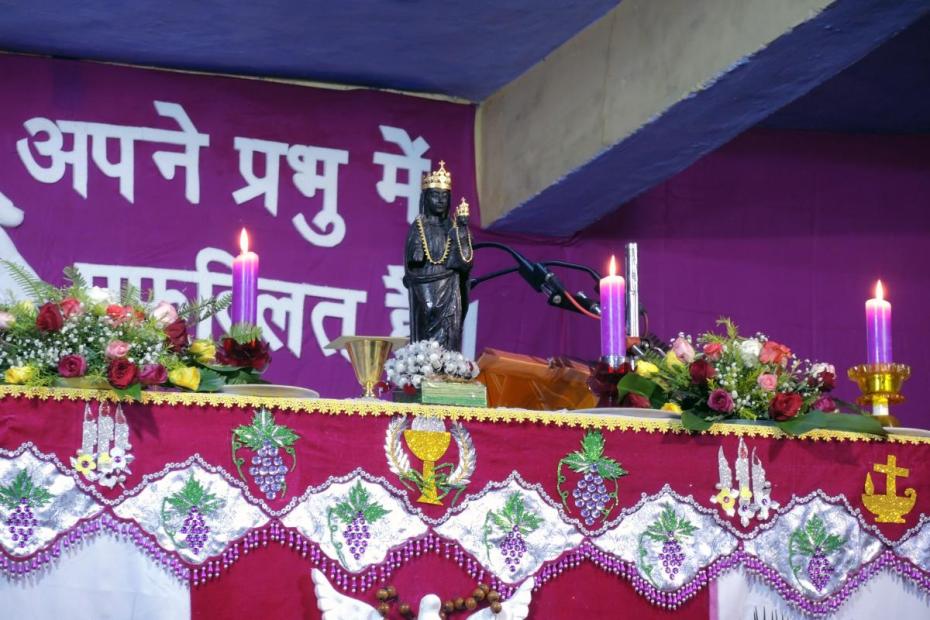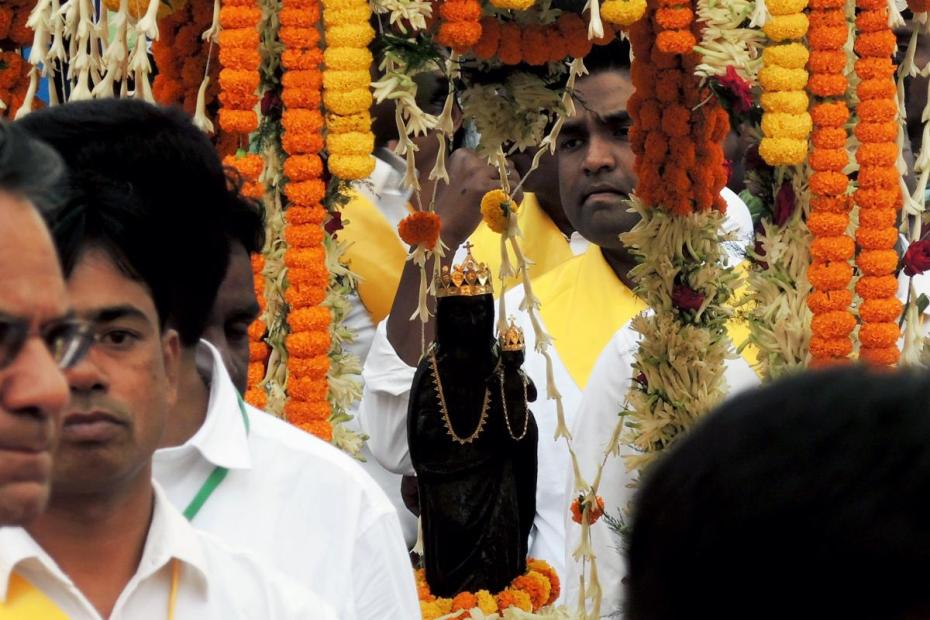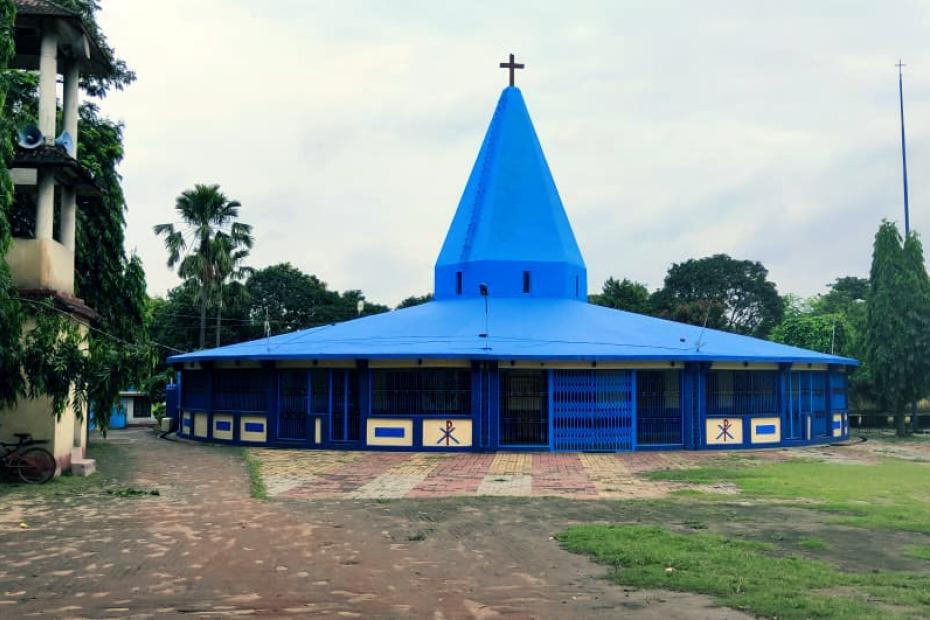The story of Dhori Mata1 begins in 1956 when the present day state of Jharkhand was part of Bihar. The coalfields were worked by miners from the Bilaspuri community from neighboring Madhya Pradesh.
On Tuesday, June 12, 1956, Rupa Satnami, a Bilaspuri miner at Dhori Coalmine, was excavating coal when he reportedly heard a voice say in Hindi: “Strike gently, I am here.” After striking again, he saw a statue inset into a small indentation in the wall of coal. It was a statue of a woman and child, and one of its arms had been broken off by Rupa Satnami’s pickaxe.
The initial reaction among the miners was that this was a statue of the Goddess Kali, who is often represented with a black complexion. But while Kali is sometimes represented with the baby Shiva in her arms, that representation is rare.
At that time, the local Christian community was small and dated from Belgian, American, and Australian Jesuit missionary work from the mid-19th century onwards. But the local priest successfully petitioned to have the statue entrusted to his parish. The statue was placed in St. Anthony’s church, in Bokaro Thermal, a village that also boasts Asia’s oldest thermal power plant. The statue was named Dhori Mata, after the place in which it was found.
The statue of Dhori Mata was specially blessed by Pope Paul VI during his pastoral visit to Mumbai in 1964. In 1967, the statue was sent to Belgium was found to be made of jackfruit wood and dated to be approximately 400-500 years old. In 1987, the statue was transferred to its present place of display in Jarangdih.
Dhori Mata’s shrine in Jarangdih has the formal title “Dhora Mata Tirthalaya.” Tirthalaya is the Hindi word for “shrine” that derives from the Sanskrit word for a “holy crossing place” or “ford.” In this sense, Dhori Mata Tirthayalia is believed by pilgrims and devotees to be a place where they can—if only momentarily—cross or ford the boundary that divides the divine and human worlds. Because it is a sacred space, devotees and pilgrims are careful to remove their footwear before entering the shrine.
After Dhora Mata Tirthalaya was established, it became the target of looters. In 1994, robbers entered the shrine and tied up the head priest. But when the robbers moved to kidnap the priest, they found that they could not shake him from the chair after they untied him. In 2008, the statue was stolen and a procession was organized in reparation and to pray for the statue’s safekeeping and return. As the procession was ending, a boy found the statue abandoned in a nearby scrapyard. The shrine was subsequently rededicated and Dhori Mata Tirthayalia is now listed on the official tourist map of Jharkhand state. A larger tourist complex is also planned for the site.
- 1For a fuller discussion of the history of the Dhori Mata shrine upon which this section draws, see Suresh Gaikwad, Mary as Dhori Mata: Miraculous Mother of Coal Mines (Hazaribag: Hazaribag Catholic Diocese, 2014).


